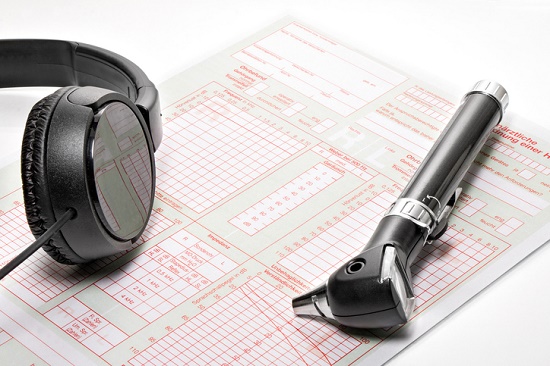
The hearing exam truly is the easy part. The tricky part is accepting your hearing loss and actually setting up the hearing test in the first place.
You’ve more than likely read the stats by now: 48 million people in the US suffer from hearing loss but only a small fraction actually do anything about it, and only 20 percent of those who would benefit from hearing aids actually wear them.
So if you’ve already set up your hearing test, great job, you’ve already overcome the largest obstacle to healthier hearing.
The hearing test, as you’ll notice, is a simple and easy, non-invasive process that will confirm the extent of your hearing loss to help develop the most appropriate treatment course.
After you first arrive at the office, you’ll begin by filling out some paperwork. Then, you’ll consult with your hearing care provider to go over your hearing health history.
Your Hearing Health History
Your hearing loss, if existing, can be a consequence of direct exposure to loud noise, the natural aging process, or by an underlying ailment. You’ll want to rule out any underlying conditions prior to proceeding to the actual hearing exam.
If you have an earwax impaction, as an example, you could be hearing better within a few minutes after a professional cleaning. The presence of any other ailments will be considered and the appropriate referral made, if necessary.
After examining your basic medical history, you’ll go over your exposure to loud sounds, your hearing loss symptoms, and what you desire to accomplish with better hearing.
It’s vital to establish possible causes, how symptoms are adversely affective your life, and how better hearing will improve your life, which is in the end the entire point. Be wary of the practitioner that doesn’t seem to really care about the main reasons why you desire to improve your hearing to begin with.
The Hearing Test
There’s one additional step to take before starting the hearing test: the visual evaluation of the ear with a device called an otoscope. This will help rule out any issues with the ear canal, the eardrum, or the excessive accumulation of earwax.
Next, you’ll be escorted to a sound-treated room with your hearing care provider. You’ll be asked to wear headphones, and the provider will begin to play you some sounds.
You will be presented with various sounds at assorted frequencies, and you’ll be requested to identify the quietest sounds you can hear at each frequency. This is termed your hearing threshold, and the hearing care provider will log these values on a chart called an audiogram.
The hearing test will probably also entail speech testing, where you’ll be instructed to repeat the words delivered to you. Assorted types of words, presented at various volumes with and without background noise, will be presented. This will help confirm if hearing aids can help you with speech comprehension.
At the conclusion of the testing, your hearing care professional will review the final results with you.
Reviewing Your Hearing Test Results
Referring to your audiogram, your hearing care provider will now talk about your hearing in both ears. Contingent on the results, your hearing will be categorized as normal or as displaying mild, moderate, severe, or profound hearing loss.
If a hearing loss is found, the next step is talking about your treatment options. Seeing that there are no current medical or surgical treatments to repair hearing damage, this means comparing your hearing aid options.
Present hearing aids come in a range of shapes, sizes, and colors, at different prices with several advanced functions and features. In selecting your hearing aids, it’s important to work with an expert hearing care professional for three reasons:
- They can help you find the ideal hearing aid model to meet all of your goals.
- They can help you identify the advanced functions you need—along with the ones you don’t—at a price tag that suits your budget.
- They can program your new hearing aids to amplify only the sounds you have trouble hearing—determined by the hearing test—ensuring optimal sound quality.
And that’s it, a quick, simple procedure in exchange for a lifetime of healthier hearing. We’d say that’s a very good deal.
We look forward to seeing you!

